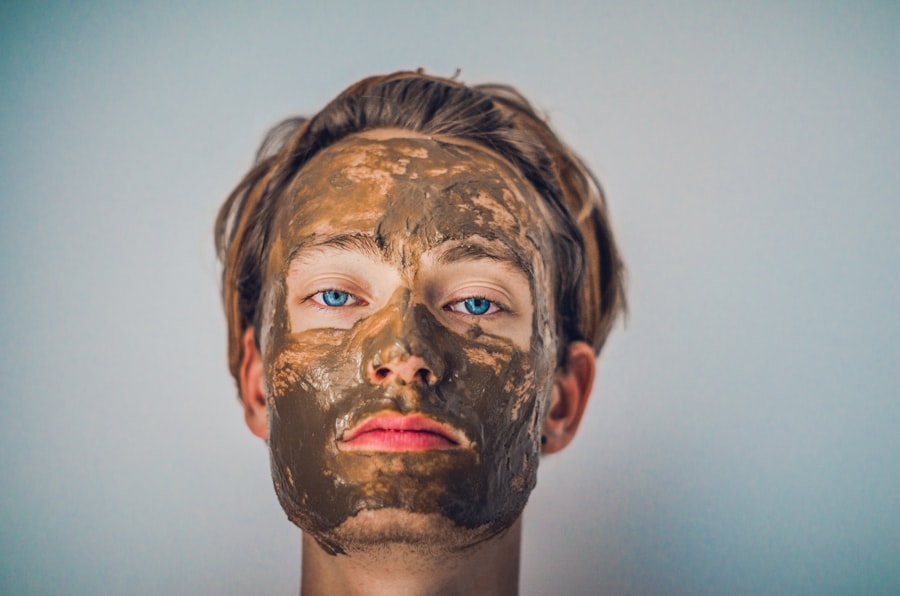Laser hair removal has emerged as a popular choice for those seeking a long-term solution to unwanted hair. This innovative technique utilizes concentrated beams of light to target hair follicles, effectively inhibiting future hair growth. The process is relatively quick and can be performed on various body parts, including the face, legs, and underarms.
As you consider this option, it’s essential to understand how the technology works. The laser emits a specific wavelength of light that is absorbed by the pigment in the hair. This absorption generates heat, which damages the follicle and prevents future hair growth.
The effectiveness of laser hair removal can vary based on several factors, including hair color, skin type, and the area being treated. Generally, individuals with lighter skin and darker hair tend to see the best results, as the contrast allows the laser to target the hair more effectively. However, advancements in technology have made it possible for people with a wider range of skin tones and hair colors to benefit from this treatment.
As you explore this option, it’s crucial to have realistic expectations regarding the number of sessions required and the potential for permanent hair reduction.
Key Takeaways
- Laser hair removal uses concentrated light to target and destroy hair follicles, resulting in long-term hair reduction.
- Potential risks and side effects of laser hair removal include skin irritation, redness, swelling, and changes in skin pigmentation.
- Skin damage from laser hair removal can occur if the treatment is not performed properly or if the skin is not adequately protected.
- Factors that contribute to skin damage during laser hair removal include improper settings, inappropriate candidate selection, and inadequate cooling of the skin.
- To minimize the risk of skin damage during laser hair removal, it is important to choose a qualified and experienced practitioner, follow pre-treatment guidelines, and protect the skin from sun exposure.
Potential Risks and Side Effects
While laser hair removal is generally considered safe, it is not without its risks and side effects. As with any cosmetic procedure, you may experience some adverse reactions.
These symptoms typically subside within a few hours to a few days after treatment. However, it’s essential to be aware that more severe side effects can occur in some cases. For instance, you might experience blistering or changes in skin pigmentation, particularly if you have darker skin or if the procedure is not performed correctly.
Another potential risk involves the possibility of scarring. Although rare, improper technique or inadequate aftercare can lead to lasting skin damage. It’s crucial to choose a qualified practitioner who has experience with laser hair removal to minimize these risks.
Before undergoing treatment, you should discuss your medical history and any concerns you may have with your provider. This open communication will help ensure that you are well-informed about what to expect and how to prepare for the procedure.
Skin Damage from Laser Hair Removal

Skin damage is one of the most significant concerns associated with laser hair removal. While many people undergo the procedure without any issues, there is always a risk of adverse effects on the skin. The laser’s heat can cause thermal injury to the surrounding skin tissue, leading to redness, swelling, or even burns in more severe cases.
If you have sensitive skin or a history of skin conditions, you may be at a higher risk for these complications. In addition to immediate reactions, there is also the potential for long-term skin damage. Some individuals may experience changes in skin texture or pigmentation following treatment.
For example, hyperpigmentation can occur when the skin darkens in response to the laser’s heat, while hypopigmentation can lead to lighter patches on the skin. These changes can be distressing and may take time to resolve. Therefore, it’s essential to weigh the benefits of laser hair removal against the potential for skin damage before making a decision.
(Source: American Academy of Dermatology)
Factors that Contribute to Skin Damage
| Factor | Contribution to Skin Damage |
|---|---|
| UV Radiation | Causes sunburn, premature aging, and increases the risk of skin cancer |
| Pollution | Can lead to skin inflammation, acne, and premature aging |
| Poor Diet | Lack of essential nutrients can result in dull, dry, and unhealthy skin |
| Smoking | Reduces blood flow, damages collagen and elastin, leading to wrinkles and sagging skin |
| Stress | Can trigger skin conditions like eczema, psoriasis, and acne |
Several factors can contribute to the likelihood of skin damage during laser hair removal. One of the most significant is your skin type and color. Individuals with darker skin tones are at a higher risk for complications because the laser may not differentiate effectively between the pigment in the hair and that in the surrounding skin.
This can lead to overheating and subsequent damage to the skin tissue. Additionally, if your hair is fine or light-colored, it may not absorb enough laser energy for effective treatment, which could result in multiple sessions and increased exposure to potential side effects. Another factor is the skill and experience of the practitioner performing the procedure.
A qualified technician will understand how to adjust the laser settings based on your unique characteristics, ensuring that you receive safe and effective treatment. If you choose an inexperienced provider or one who uses outdated equipment, you may be more susceptible to adverse effects. Furthermore, pre-treatment care plays a crucial role; for instance, tanning or using certain skincare products before your session can increase your risk of complications.
How to Minimize the Risk of Skin Damage
To minimize the risk of skin damage during laser hair removal, it’s essential to take proactive steps before and after your treatment. First and foremost, choose a reputable clinic with experienced practitioners who specialize in laser hair removal. Research their credentials and read reviews from previous clients to ensure that they have a track record of safety and effectiveness.
During your consultation, don’t hesitate to ask questions about their techniques and equipment. Additionally, follow pre-treatment guidelines provided by your practitioner.
You should also refrain from using certain skincare products that could irritate your skin or increase sensitivity. After your treatment, adhere strictly to post-care instructions, which may involve applying soothing creams or avoiding hot showers for a few days. By taking these precautions, you can significantly reduce your risk of experiencing adverse effects.
Post-Treatment Care for Laser Hair Removal

Post-treatment care is crucial for ensuring optimal results from your laser hair removal sessions while minimizing any potential side effects. After your procedure, you may notice some redness or swelling in the treated area; this is normal and should subside within a few hours to a few days. To help soothe your skin, consider applying a cold compress or aloe vera gel to alleviate discomfort.
It’s also advisable to avoid hot baths, saunas, or vigorous exercise for at least 24 hours post-treatment, as these activities can exacerbate irritation. In addition to immediate care, you should also be mindful of sun exposure following your sessions. Your skin will be more sensitive after laser treatment, making it crucial to protect it from UV rays.
Wearing sunscreen with a high SPF is essential whenever you go outside, even on cloudy days. You should also avoid tanning beds and direct sunlight for several weeks after treatment to prevent complications such as hyperpigmentation or burns.
Seeking Professional Advice
Before committing to laser hair removal, seeking professional advice is vital for making an informed decision about your treatment options. Schedule a consultation with a qualified practitioner who specializes in laser hair removal; this will allow you to discuss your specific needs and concerns in detail. During this meeting, be open about your medical history and any previous skin issues you may have experienced.
A knowledgeable provider will assess your skin type and hair color to determine whether you are a suitable candidate for the procedure. Additionally, don’t hesitate to ask about their experience with different types of lasers and techniques used in their practice. Understanding their approach will give you confidence in their ability to perform the procedure safely and effectively.
You should also inquire about potential risks and side effects specific to your situation so that you can weigh them against the benefits of treatment.
Is Laser Hair Removal Safe for Your Skin?
In conclusion, laser hair removal can be a safe and effective method for achieving long-term hair reduction when performed by qualified professionals under appropriate conditions. However, it is essential to recognize that there are risks involved, particularly concerning skin damage. By understanding these risks and taking proactive steps—such as choosing an experienced practitioner and adhering to pre- and post-treatment care—you can significantly minimize potential complications.
Ultimately, whether laser hair removal is right for you depends on various factors including your skin type, hair color, and personal preferences regarding hair removal methods. By seeking professional advice and conducting thorough research before undergoing treatment, you can make an informed decision that aligns with your goals while prioritizing your skin’s health and safety.
If you are considering laser hair removal, you may be wondering if it causes any side effects. According to a recent article on inlaserhairremoval.com, laser hair removal is generally safe and effective, but some potential side effects may include redness, swelling, and skin irritation. It is important to consult with a professional before undergoing any laser hair removal treatment to ensure the best results and minimize any risks.
FAQs
What is laser hair removal?
Laser hair removal is a cosmetic procedure that uses a concentrated beam of light (laser) to remove unwanted hair. The light is absorbed by the pigment in the hair follicles, which damages the follicle and inhibits future hair growth.
Does laser hair removal cause pain?
Laser hair removal may cause some discomfort, often described as a snapping or stinging sensation. However, most people find the discomfort to be tolerable. Some areas of the body may be more sensitive than others, but the procedure is generally well-tolerated.
Does laser hair removal cause scarring?
When performed by a qualified and experienced professional, laser hair removal is generally safe and does not cause scarring. However, there is a small risk of skin damage, including burns or changes in skin pigmentation. It is important to choose a reputable provider and follow all pre- and post-treatment care instructions to minimize these risks.
Does laser hair removal cause ingrown hairs?
Laser hair removal can actually help reduce the occurrence of ingrown hairs. By targeting the hair follicle, laser hair removal can prevent the hair from growing back and becoming trapped beneath the skin, which is a common cause of ingrown hairs.
Does laser hair removal cause permanent hair removal?
Laser hair removal can lead to long-term hair reduction, but it is not always permanent. Some hair may eventually grow back, but it is often finer and lighter in color. Multiple treatment sessions are usually required to achieve the best results, and maintenance treatments may be needed to sustain the effects.






